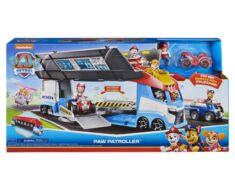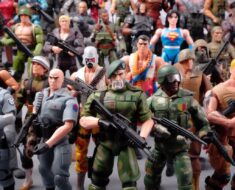Lego is one of the most recognizable and beloved toy brands in the world. The company’s name is derived from the Danish words “leg godt”, meaning “play well”. But how did Lego go from a humble carpenter’s workshop to a multi-billion-dollar enterprise that produces more than 75 billion bricks every year? Here is a brief overview of Lego’s history, challenges, and success factors.
The Early Years: From Wooden Toys to Plastic Bricks
- The Lego company was founded in 1932 by Ole Kirk Christiansen, a carpenter whose primary business of producing household goods had suffered due to the Great Depression.
- Initially producing wooden toys, the company later developed a system of interlocking bricks. Manufacturing of plastic Lego bricks began in Denmark in 1947.
- The brick in its present form was launched in 1958. The interlocking principle with its tubes makes it unique and offers unlimited building possibilities.
- In 1968, the first LEGOLAND park opened in Billund, Denmark, featuring attractions and models made of Lego bricks.

The Expansion: From Denmark to the World
- In the 1970s and 1980s, Lego expanded its product range to include various themes and sets, catering to different age groups, interests, and skill levels.
- Some of the most popular themes were LEGO City, LEGO Technic, LEGO Space, and LEGO Castle.
- Lego also entered new markets such as Japan, Australia, and Latin America.
- In 1984, Lego launched LEGO Education, a division that provides learning solutions for schools and educational institutions.
The Crisis: From Success to Struggle
- In the 1990s and early 2000s, Lego faced several challenges that threatened its survival.
- The company faced increasing competition from other toy manufacturers, such as Hasbro and Mattel, as well as from video games and other digital media.
- Lego also suffered from overexpansion, product proliferation, quality issues, and high costs.
- In 2004, Lego reported a loss of DKK 1.9 billion ($345 million), the largest in its history.
The Turnaround: From Struggle to Success
- In 2004, Lego hired Jørgen Vig Knudstorp as its CEO, the first outsider to lead the company.
- Knudstorp implemented a radical transformation strategy that focused on restoring profitability, innovation, and brand value.
- Some of the key actions taken by Knudstorp were:
- Divesting non-core businesses, such as LEGOLAND parks and video game development.
- Reducing the number of products, suppliers, and employees.
- Improving quality, efficiency, and customer satisfaction.
- Strengthening partnerships with retailers and licensors.
- Investing in research and development, marketing, and digital platforms.
- As a result of these measures, Lego returned to profitability in 2005 and has since achieved double-digit growth in revenue and operating profit every year until 2016.
The Future: From Success to Sustainability
- Lego’s vision is to inspire and develop the builders of tomorrow through creative play and learning.
- The company’s mission is to reach more children in more markets with more products that deliver high quality, safety, and fun.
- Some of the key initiatives that Lego is pursuing to achieve its vision and mission are:
- Expanding its presence in emerging markets such as China and India.
- Developing new products and experiences that combine physical and digital play.
- Collaborating with popular intellectual properties such as Marvel, DC Comics, Disney, Harry Potter, and Star Wars.
- Engaging with its fan community through platforms such as LEGO Ideas and LEGO Life.
- Promoting social and environmental responsibility through programs such as LEGO Foundation and LEGO Sustainable Materials Centre.







